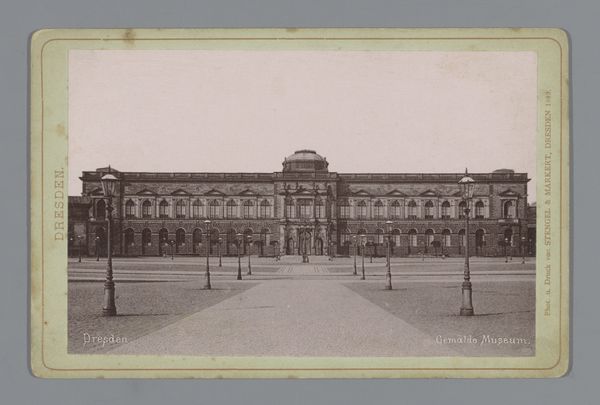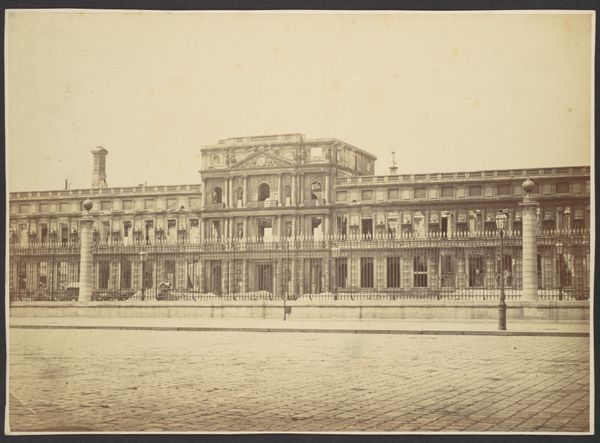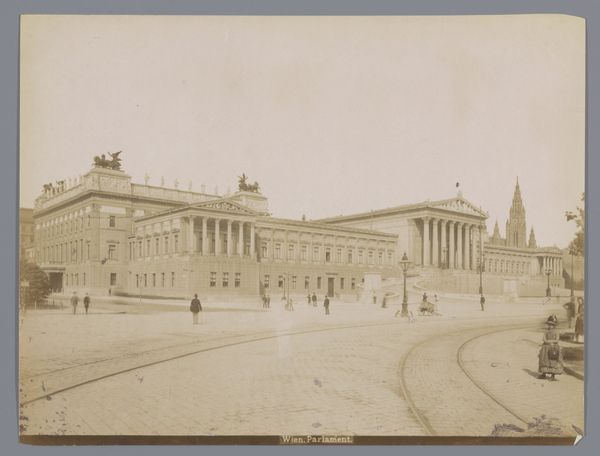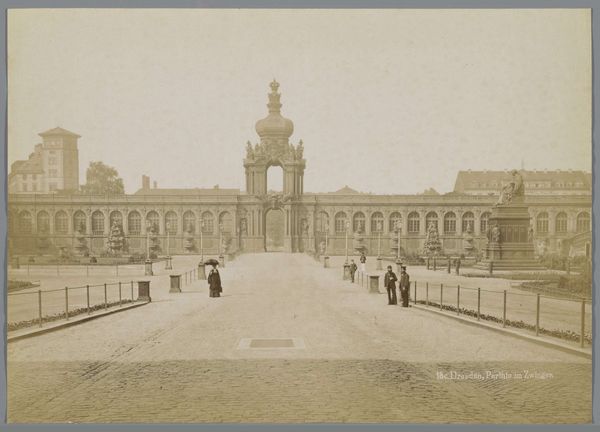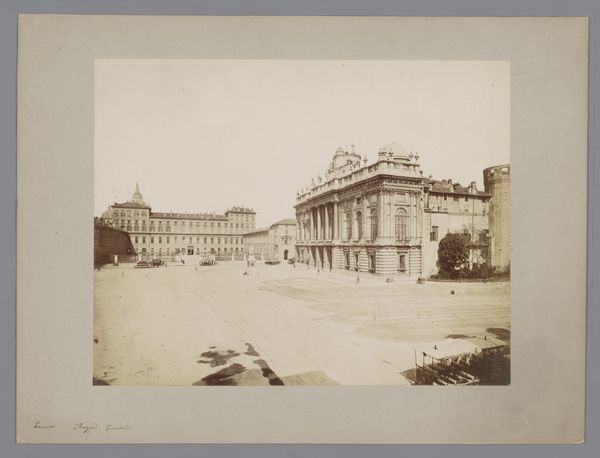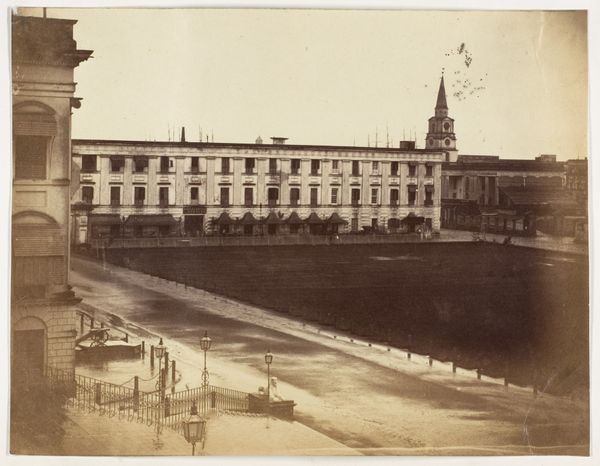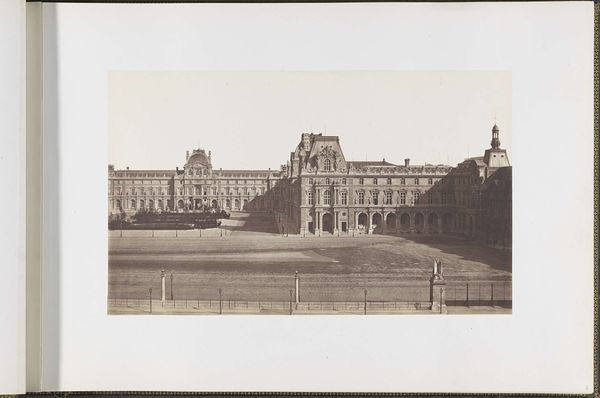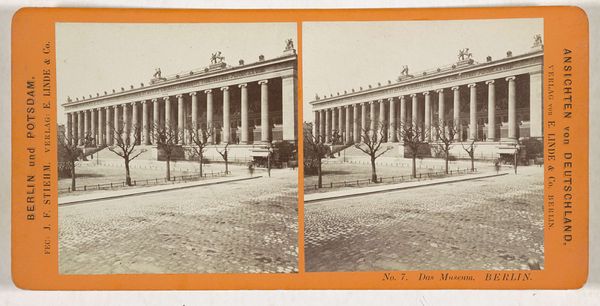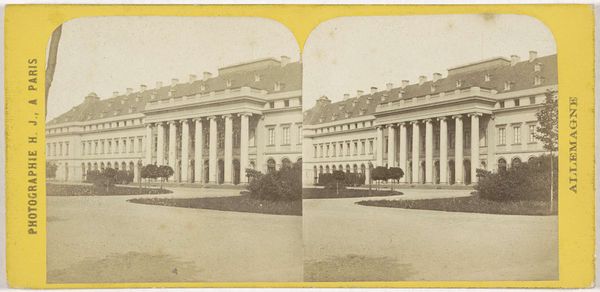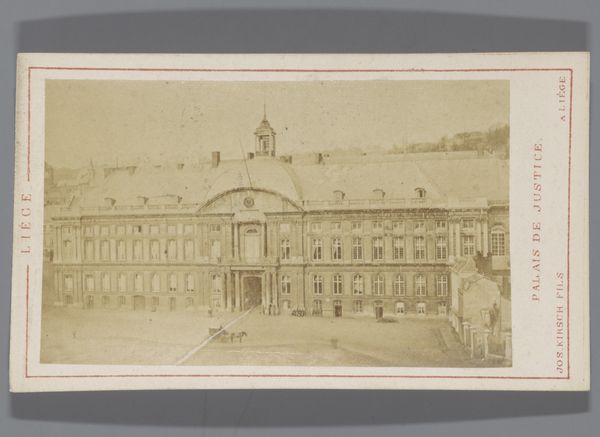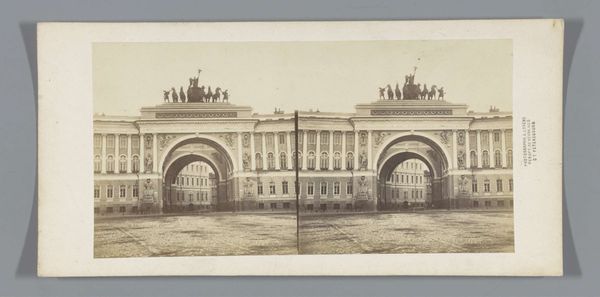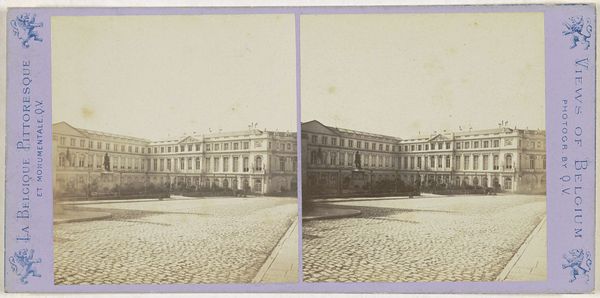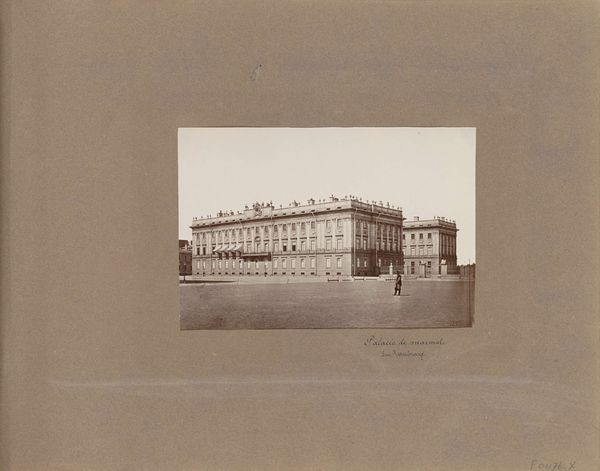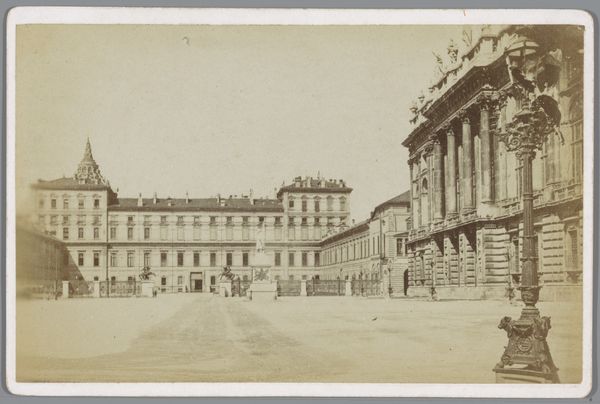
Dimensions: height 85 mm, width 170 mm
Copyright: Rijks Museum: Open Domain
Curator: Standing before us is a photograph titled "San Marcoplein te Venetië," which translates to Saint Mark's Square in Venice. This albumen print, created by Antonio Perini sometime between 1850 and 1870, gives us a glimpse into 19th-century Venice. Editor: My first impression is a sense of melancholy, of grandeur tinged with solitude. The vast square, typically teeming with life, feels almost deserted, save for that solitary figure. The strong lines of the architecture are impressive but the subdued tonality lends it an air of the past. Curator: That feeling of solitude you describe is interesting, considering Venice's history as a vibrant hub of commerce and culture. Photography in this period offered a relatively objective record of urban spaces. But even the seemingly straightforward photograph carries a particular agenda, suggesting Venice’s romantic appeal for travelers and artists alike. Editor: Absolutely, this resonates with the romantic sensibility prevalent in that era. But I can’t help but fixate on the architectural details. All those repeated arches. Does this symbolize a particular social order or structure? And the central columns, what of their meaning to Venetian citizens? Curator: The repeated architectural motifs – the arches, the rhythmic repetition of the facades – could be read as expressions of power and stability, key attributes that the Venetian Republic, a mercantile powerhouse, cultivated over centuries. As for the columns, Saint Mark's Square contains some columns marking it a special place in the city. The capture suggests a kind of urban stage where social rituals and performances took place, but that seems to be interrupted, frozen for that moment. Editor: The figure present in the artwork definitely contrasts to the rigid urban landscape captured here. As I am contemplating the columns marking what is and is not Saint Mark's Square, this child could reflect a larger transition, a disruption of prior norms, or it could be a symbolic element of the common man standing in defiance against a place so connected to elites and the powers they command. Curator: I appreciate how you're zooming into the psychological and symbolic dimensions that emerge from seemingly mundane subjects. We often find it hard to disentangle social shifts from Venice itself. I’m still very interested in understanding more about its evolving role within European imagination in that time period. Editor: Me too. It shows how a picture like this—an instant frozen in time—still gives a peek into cultural values and history!
Comments
No comments
Be the first to comment and join the conversation on the ultimate creative platform.
